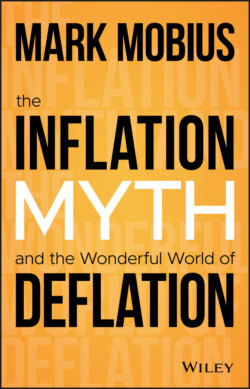Читать книгу The Inflation Myth and the Wonderful World of Deflation - Mark Mobius - Страница 20
Shells and Money
ОглавлениеJust as the Bank of England has the symbolic mulberry trees in its Garden Court, so the Museum of the National Bank of Belgium has its own artifact from the history of money: cowrie shells. The cowrie is, in fact, a sea snail which lives in the warm waters of the Indian and Pacific Oceans. Its shell is small, egg‐shaped, and relatively uniform in size and nature. Before paper money, before coins, it was the cowrie shell that was used as a form of early currency in China. In the late 1970s, during an excavation of the ancient ruins of Yin, the capital of the Shang civilization, which existed from 1766–1045 BC, archaeologist Zheng Zhenxiang uncovered the tomb of Fu Hao, a female general. The tomb was one of the most important finds in Chinese archaeology. The tomb consisted of a 20‐meter wooden chamber, the coffin of Fu Hao, and 16 human sacrifices. As well as this, the grave revealed hundreds of ceremonial bronze vessels, jades, and bone carvings, and more than 7,000 cowrie shells. The tomb of Fu Hao was not the only evidence that cowrie shells were used as currency. An inscription found on a bronze wine vessel from the following Zhou Dynasty included an inscription of how the maker was paid for producing this unique artifact: “I was given thirty strings of cowrie shells, and with this, I made for the Duke this precious vessel.” As well as this, the Chinese symbol for money from the Shang era is a pictographic representation of a shell. This “radical” – a rectangle with two internal horizontal lines and two feet – can be found today as the root for numerous Chinese words regarding money, including treasure, collateral, wealth, buy, and sell.
Although a seemingly primitive form of currency, in many respects cowrie shells were an extremely effective unit of trade. They were portable, non‐perishable, and regular in size. And unlike their successors in the form of coins and paper money, they weren't easily manipulated by those in charge: you couldn't debase a shell or print more when the financial going got rough. The shells found in the Shang tombs near Anyang came from thes Indian Ocean – a huge distance for the time. In the nearby basin of the Yellow River, cowrie shells were all but impossible to find. What this meant, basically, was that unlike the subsequent use of coins and paper money, the money supply was essentially fixed. The cowrie shells held their value as a unit of wealth.
The Shang civilization wasn't the only one to use shells as a form of currency: shell money was used in West Africa up until the mid‐nineteenth century. They were used in Orissa, India, until the British East India Company replaced them at the start of the nineteenth century. On the American Pacific coast, Native Americans used them. And on the South Pacific Islands, small shells were ground down to a required size to create shell bead currency. In early China, their use as a system eventually broke down as the size of the economy grew: there weren't enough shells to keep up with the pace of growth. Later, Shang graves revealed the existence of bronze pieces in the shape of cowries to replicate cowrie shells; in effect, becoming one of the world's first minted coinages.
